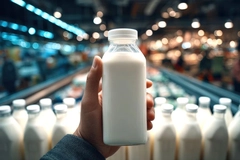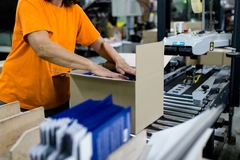Close the Glass Loop: Europe unites on 90% glass collection target

06 Jul 2020 --- A multi-stakeholder platform connecting the European glass packaging ecosystem has launched with the ambition to achieve 90 percent glass collection by 2030. The move comes as efforts to consolidate the European Circular Economy scale-up following the adoption of the European Green Deal, the EU’s agenda for sustainable growth. Glass has long been a leader in circularity, boasting infinite recyclability and a recycling collection rate of 76 percent. The platform aims to address structural challenges in the glass collection and recycling chain which are common to most EU countries.
As a pan-European action platform, Close the Glass Loop is a bottom-up, collaborative, public-private partnership that brings together 12 European federations representing glass manufacturers, processors, brands, Packaging Recovery Organizations and municipalities. To ensure local implementation of measures and tailored solutions, the European Platform will be working closely with national partners in every EU Member State.
The European founding partners are the European Container Glass Federation (FEVE), European Federation of Glass Recyclers (FERVER), Comité Européen des Entreprises Vins (CEEV), European Federation of Bottled Waters (EFBW), spiritsEUROPE, Soft Drinks Europe (UNESDA), Extended Producer Responsibility Alliance (EXPRA), Producer Responsibility Organisations Packaging Alliance (PROsPA, represented by CITEO), ACR+, Eurocities, Municipal Waste Europe, European Fruit Juice Association (AIJN) and European Association of Food and Vegetable Processors (PROFEL).
At the launch event, over 200 participants joined founding partners and national representatives from France, Germany, Italy, Poland, Portugal, Spain, UK, Austria, Belgium, Sweden and Ireland to officially launch the platform and put pen to paper on the European Action Plans.
The stewardship platform was welcomed by European Commissioner for the Environment, Fisheries and Oceans Virginijus Sinkevičiusin as a means to boost bottle-to-bottle recycling.
“Glass is a great example of a circular material. You are already achieving outstanding results in waste collection and recycling. But today you show that you want to do more, that you are determined to bring levels up across the EU and seek the room for improvement all along the chain. I am confident that you will complete your mission and make the Close the Glass Loop Platform the springboard to the higher levels of the waste hierarchy,” Sinkevičiusin said via a video message. The Close the Glass Loop platform aims to achieve 90 percent glass collection by 2030.
The Close the Glass Loop platform aims to achieve 90 percent glass collection by 2030.
Addressing structural challenges
The European Action Plan, presented by Michel Giannuzzi, President of FEVE at the launch event, aims to address structural challenges in the glass collection and recycling chain which are common to most EU countries. With municipalities seen as key players in mobilizing collection, Close the Glass Loop partners will establish a “strong partnership” with local authorities to expand source-separated glass collection, improve glass collection in large cities and tourist areas and ensure that use, collection and recycling is better supported by common guidelines and tools at all stages of use.
Individual action points will range from organizing a Municipalities Roadshow and best-practice workshops to support in facilitating pilot collection projects in densely populated or tourist areas to develop a roadmap for cullet quality and to reinforce cooperation between national stakeholders.
“We have the advantage of working with a material that is 100 percent and infinitely circular by nature and already a success story in terms of sustainability. The more we recycle glass, the less we litter or rely on virgin resources, while also providing premium packaging in terms of quality preservation, health and safety,” Giannuzzi explained.
“Today, 76 percent of glass packaging in the EU market is collected for recycling – but there is more to be done. We need to fully seize the advantages offered by glass and recycle more and better. And to this end, we need the active commitment of the whole value chain. The level of engagement in Close the Glass Loop to date lays promising grounds for success and I am very much looking forward to the positive impact it will create over time,” he added.
National Action Plans spotlight diverse approaches
Several National Action Plans from Austria, France, Spain and Sweden were also presented, highlighting the diversity of approaches between EU Member States and emphasizing the need to provide tailored action plans at the local level. At the same time, it reflects what the stakeholders view as the importance of a coordinated approach on the European level to exchange best practice to close the collection gap and improve the quality of recycled glass (cullet). More availability of good quality cullet means a more resource-efficient production process, keeping resources productive in a bottle-to-bottle manufacturing loop and providing a premium level, safe and truly recycled packaging material. The platform aims to address structural challenges in the glass collection and recycling chain which are common to most EU countries.
The platform aims to address structural challenges in the glass collection and recycling chain which are common to most EU countries.
The production of packaging for food and beverages as well as the pharmaceutical, perfumery and cosmetics sectors with an endlessly recyclable, reusable and permanent material like glass translates to less consumption of natural resources, less waste and less use of energy in line with the Sustainable Consumption and Production Goal (SDG 12), Close the Glass Loop indicates. Simultaneously, glass recycling empowers the industry to “dramatically reduce” energy consumption and CO2 emissions in line with the Climate Action Goal (SDG 13).
“Recycling isn’t too hard”
Fortune 500 glass container giant Owens-Illinois believes that the “US can look to the EU as proof that recycling infrastructure can thrive when it has support.”
“Europe’s success should put to rest the myth in the US that recycling is ‘just too hard.’ It’s time to stop making excuses. The US has a responsibility to get recycling right and can learn from collaborations like Close the Glass Loop,” says Randy Burns, Chief Sustainability Officer at O-I Glass.
Edited By Joshua Poole











